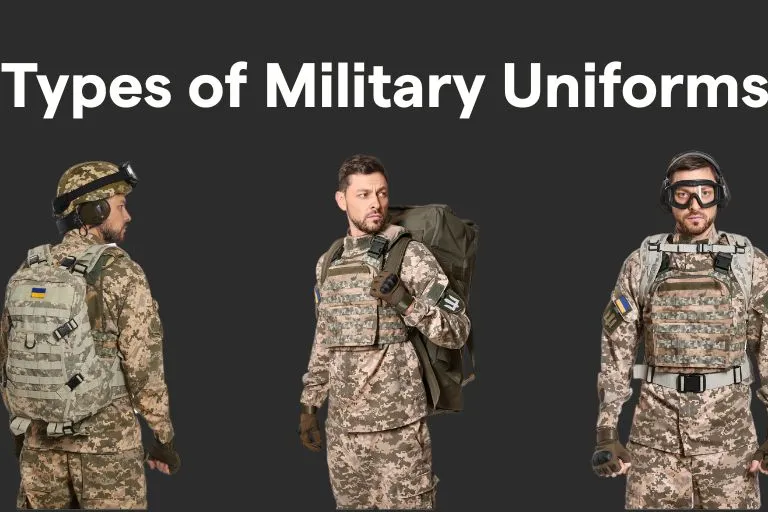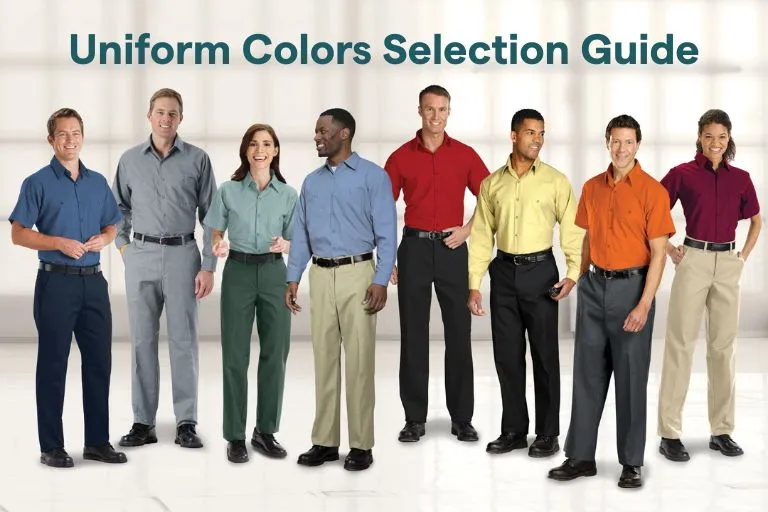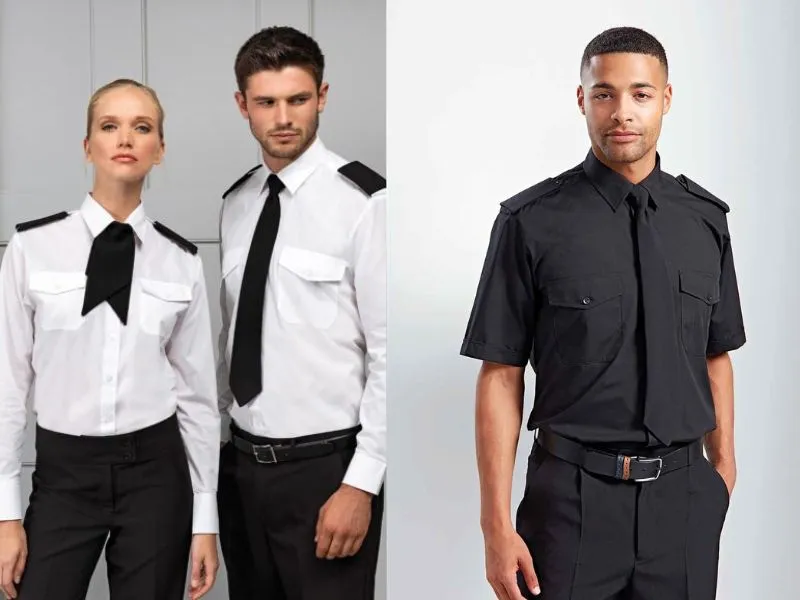Military uniforms do a lot more than cover you up. They show who you are, keep you safe, and help you do your job well. Soldiers wear them for fighting, ceremonies, or daily tasks, and each type has a special purpose. So, let’s explore the different types of military uniforms, check out their fabrics, and see why they’re important. Plus, you’ll learn how TrueFit creates awesome uniforms for any military need.
Quick Look: Military Uniform Types
First, check out this table. It shows the five main types of military uniforms, what they do, their cool features, and the fabrics they use. It’s a fast way to get the basics!
| Uniform Type | Job | Cool Features | Fabrics |
|---|---|---|---|
| Combat | Field missions | Camouflage, tough design, many pockets | Ripstop cotton, nylon blends |
| Service | Daily work | Neat style, rank badges | Wool, polyester blends |
| Dress | Fancy events | Medals, ribbons, classy look | Fine wool, gabardine |
| Training | Exercise | Comfy, stretchy, breathable | Synthetic fibers, sweat-wicking |
| Specialized | Unique tasks | Custom features (e.g., fire-proof) | Varies (e.g., Nomex) |
This table gives you a head start, but there’s more to learn. Keep reading for all the details!
What Are Military Uniforms?
Military uniforms are outfits soldiers wear for their jobs. They help with tasks like fighting, office work, or parades, and they’re designed to fit each role perfectly. Soldiers rely on them, so they’re made with care.
Why Soldiers Wear Uniforms
Uniforms have big jobs. They protect soldiers in combat with tough fabrics and sneaky patterns. They look professional for daily tasks, showing rank clearly. And they shine at events, displaying medals proudly. TrueFit, has made these uniforms for over 10 years, following strict military rules.
Three Big Reasons They Matter
Uniforms are a big deal because:
- Safety: They guard against dangers like fire or bad weather.
- Identity: They show your role and team.
- Pride: They make soldiers feel part of something special.
“Uniforms act like a badge of honor, and they show everyone your role,” says John Smith, a military uniform expert. TrueFit uses over 200 workers and 300 machines to craft uniforms that shine, as you can see in their manufacturing process.
TrueFit’s Role
TrueFit started in 2014, and they’ve built a reputation for great uniforms. They use high-tech tools and eco-friendly methods, so every uniform is top-notch. Whether it’s for the army or a special team, TrueFit delivers.
Types of Military Uniforms
You’ll find five main types of military uniforms: combat, service, dress, training, and specialized. Each one looks and feels different because it’s made for a specific task. Let’s dive in!
Combat Uniforms
What Are They?: Combat uniforms help soldiers fight or go on missions. They keep soldiers hidden and safe in tough places like forests or deserts.
Why Use Them?: Soldiers face rough conditions, so these uniforms are super tough. They’re comfy for long days, and they don’t rip easily. They’re built for action!
Cool Features:
- Camouflage to hide in nature.
- Tons of pockets for tools or snacks.
- Pads on knees and elbows for protection.
- Water- or fire-resistant coatings.
Fabrics: They use ripstop cotton and nylon blends. Ripstop cotton stops tears with a special grid, and nylon makes it strong but light. Both keep soldiers cool.
Examples: The US Army’s Combat Uniform Sets and Marine Corps’ gear are awesome examples. They match any mission’s environment.
Try This: TrueFit’s Ripstop Forest Combat Uniforms are perfect for tough jobs.
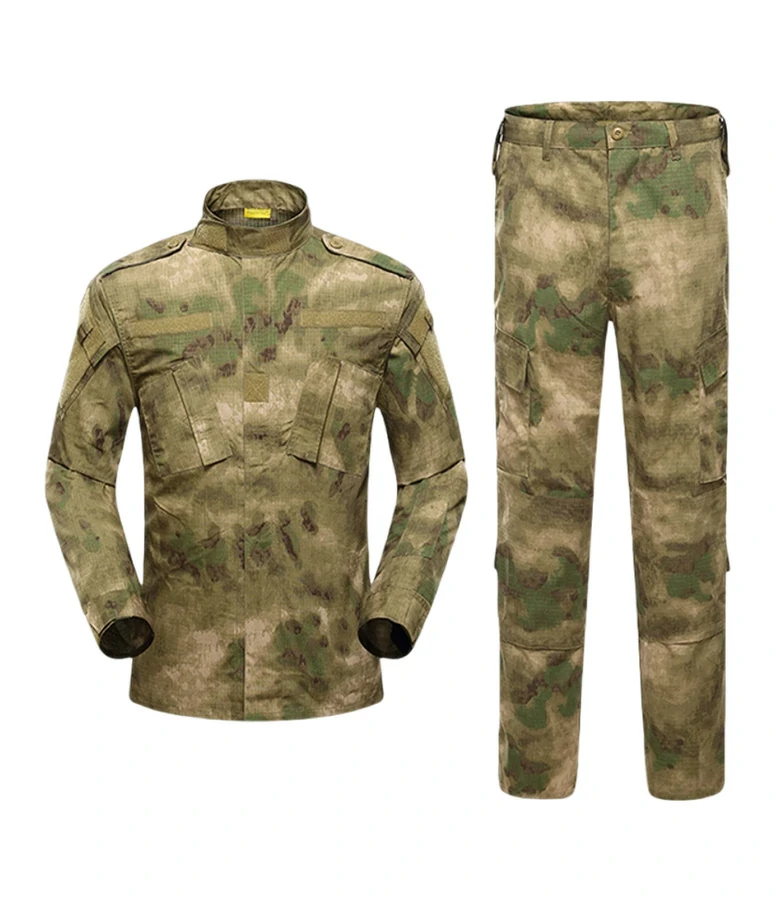
Tough Ripstop Combat Uniform by TrueFit
Combat Gear Details
Combat uniforms hide soldiers well, but they’re also practical. Pockets hold maps or gear, and fabrics resist rain or scratches. TrueFit tests every detail, so their uniforms handle any mission.
Service Uniforms
What Are They?: Service uniforms are for everyday tasks like office work or meetings. They’re what soldiers wear when they’re not fighting or training.
Why Use Them?: These uniforms keep soldiers looking neat and professional. They’re comfy for desk jobs, and they show rank clearly, so everyone knows who’s who.
Cool Features:
- Tight, clean fit that looks sharp.
- Badges for rank and team.
- Often include pants, a skirt, or a jacket.
Fabrics: They use wool and polyester blends. Wool feels great and stays smooth, but polyester stops wrinkles and lasts long. They make a perfect combo!
Examples: The Navy’s Service Khakis and Air Force’s Blue Service Dress rock this style. Each branch adds its own flair, but they all look pro.
Try This: TrueFit’s Uniform Design Services can create your custom service uniform.
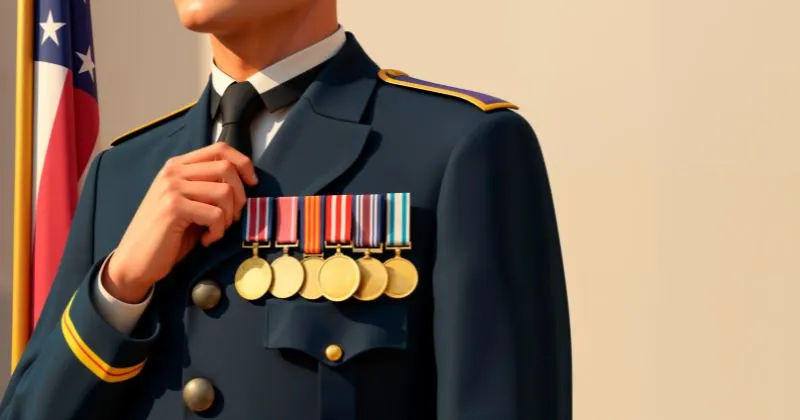
Sharp Service Uniform by TrueFit
Service Uniforms at Work
Service uniforms mix style and comfort. They’re not as tough as combat gear, but they’re great for office days or visits. Soldiers wear them to look respectful and feel good.
Dress Uniforms
What Are They?: Dress uniforms are super fancy for events like parades, weddings, or ceremonies. They’re the sharpest outfits soldiers wear.
Why Use Them?: These uniforms show tradition and honor. They display medals and awards, so soldiers stand out at big moments.
Cool Features:
- Medals and ribbons for achievements.
- Perfect fit, like a tailored suit.
- Extras like shoulder boards or sashes.
Fabrics: They use fine wool and gabardine. Fine wool looks smooth and classy, and gabardine fights wrinkles. They make soldiers look amazing.
Examples: The Marine Corps’ Dress Blues and Army’s Blue Service Dress are iconic. Soldiers wear them for proud, special times.
Try This: TrueFit’s Embroidered Men’s Suit works for dress uniforms.

Classy Dress Uniform by TrueFit
Dress Uniforms Close-Up
Dress uniforms grab attention with their shine. Each medal tells a story, and the fabric stays perfect. TrueFit crafts these with skill, so they always look great.
Training Uniforms
What Are They?: Training uniforms are for exercise and drills. They’re stretchy and comfy, so soldiers can move freely.
Why Use Them?: Soldiers train hard, so these uniforms keep them cool and flexible. They let soldiers run or stretch without feeling trapped.
Cool Features:
- Light fabrics that don’t weigh you down.
- Stretchy materials for easy moves.
- Sweat-wicking to stay dry.
Fabrics: They use synthetic fibers like polyester and spandex. These stretch well, dry fast, and keep air flowing, so soldiers stay cool.
Examples: The US Army’s Physical Fitness Uniform is a classic. It’s great for gym sessions or outdoor drills.
Try This: TrueFit’s Sportswear Casual College Style Suit is awesome for training.
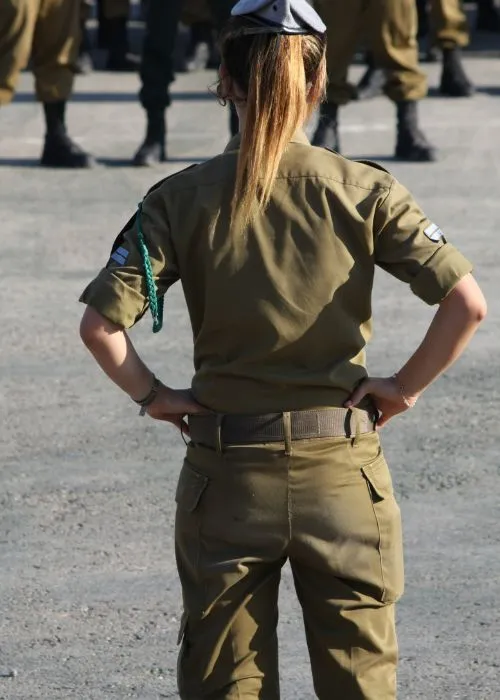
Comfy Training Uniform by TrueFit
Training Uniforms in Use
Training uniforms let soldiers move without limits. For runs or drills, they keep things light and cool. TrueFit designs them for max comfort, so soldiers focus on training.
Specialized Uniforms
What Are They?: Specialized uniforms are for unique jobs like flying planes or diving underwater. Each one fits its task perfectly.
Why Use Them?: Special jobs need special gear, so these uniforms keep soldiers safe. Pilots get fireproof suits, and divers get waterproof ones.
Cool Features:
- Flight suits block fire for pilots.
- Diving suits keep water out and warmth in.
- EOD suits shield against explosions.
Fabrics: They use materials like Nomex for fire protection or neoprene for water and heat. These fabrics handle tough tasks well.
Examples: Pilots wear flight suits, divers wear wet suits, and bomb experts wear EOD suits. Each one saves lives.
Try This: TrueFit’s Tactical Gear Jacket suits specialized roles.
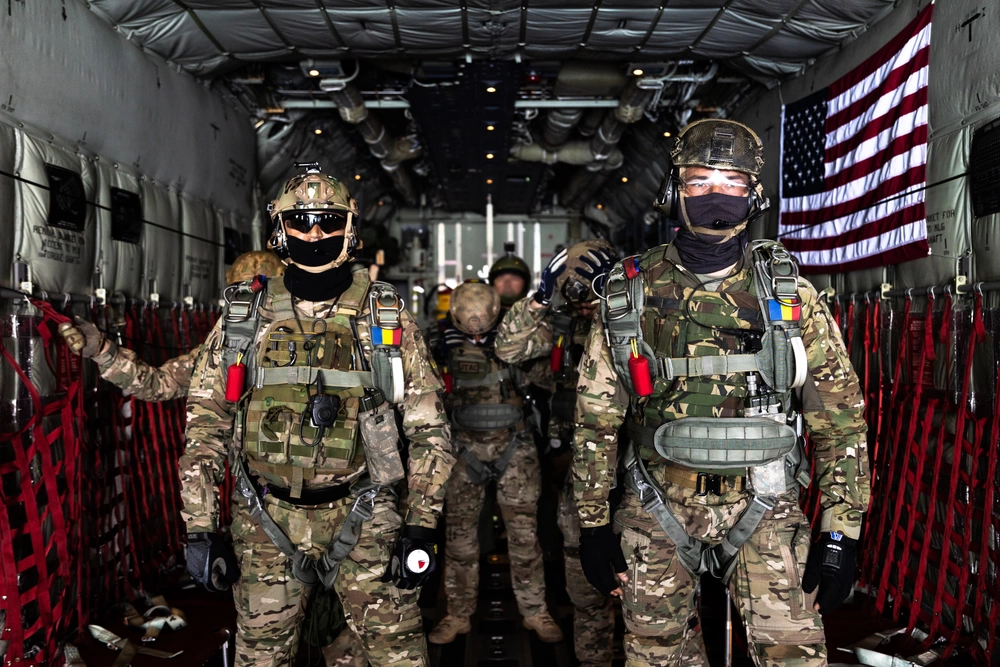
Tactical Specialized Uniform by TrueFit
Specialized Uniforms in Detail
These uniforms have clever features for crazy jobs. Fireproof threads or tough layers protect soldiers, and TrueFit uses the best materials for every role.
Why Fabric Choice Matters
Fabrics make or break a uniform. Good ones keep soldiers safe and comfy, so picking the right fabric is a big deal.
Fabrics for Jobs and Safety
Each uniform needs a specific fabric. Combat uniforms use tough materials to hide and protect. Training uniforms stretch for movement. Specialized ones might block fire or water, so soldiers stay ready.
High-Tech Fabrics
Today’s uniforms use fabrics with cool features:
- Flame retardancy: Stops fire from spreading.
- Anti-static: Prevents sparks in dangerous spots.
- UV protection: Shields from sun damage.
- Water repellency: Keeps uniforms dry.
TrueFit’s factory weaves and tests these fabrics with high-tech machines. Experts like SGS check them, so they’re always top-quality.
TrueFit’s Fabric Skills
TrueFit knows fabrics inside out after 10 years. Their R&D lab makes eco-friendly, high-performance fabrics. Want a tough, green uniform? TrueFit’s sustainability page shows how they do it.
Customization for Military Uniforms
Customization makes uniforms fit each soldier or team just right. It’s super important because military rules are strict.
Why Customization Rocks
Uniforms must follow military rules, but customization adds style like logos or colors. It shows pride and ensures a perfect fit, so soldiers feel great.
TrueFit’s Customization Options
TrueFit offers tons of choices:
- Fabric tweaks: Pick color, weight, or feel.
- Logos: Add stitches, prints, or shiny patches.
- Small batches: Order just 100 pieces per type.
- Quick samples: Get a test in 5-7 days.
With 200 workers and 300 machines, TrueFit handles any order size fast.
Logo Ideas
Logos make uniforms pop. TrueFit provides:
- Embroidery: Strong, stitched designs.
- Screen printing: Bold, colorful logos.
- Heat transfer: Sharp, detailed images.
TrueFit picks the best logo style for your uniform. See more at Personalized Products.
TrueFit’s Competitive Edge
TrueFit stands out as a top uniform maker. Here’s why they’re awesome.
Quality and Awards
TrueFit earned ISO 9001 for quality, ISO 14001 for eco-friendliness, and ISO 45001 for safety. These awards show their uniforms are the best, so you can trust them.
Green Practices
TrueFit uses eco-friendly fabrics and smart methods to help the planet. They make it easy to choose green uniforms without losing quality.
Full-Service Support
TrueFit handles everything from design to delivery. They make sure every uniform is perfect, and clients love the smooth process.
What Clients Say
Customers rave about TrueFit. Amy said their designers made comfy, stylish uniforms. David loved how TrueFit handled his small order with care.
FAQs About Military Uniforms
Have questions? Here are answers about military uniforms!
What are the main types of military uniforms?
You’ll find five types: combat, service, dress, training, and specialized. Each has a unique job, like fighting or looking fancy.
Why use different fabrics for military uniforms?
Fabrics fit the uniform’s task. Combat needs tough materials, and dress needs smooth ones, so they work perfectly.
How can you customize military uniforms?
You can tweak fabrics, add logos, or change designs. TrueFit offers many ways to make them yours.
What makes TrueFit’s military uniforms special?
TrueFit’s uniforms are high-quality, customizable, and eco-friendly. Their awards and experience make them a great choice.
How long does it take to make custom military uniforms?
Samples take 5-7 days, and big orders take 15-30 days, depending on your needs.
Conclusion
Military uniforms are way more than clothes. They keep soldiers safe, show pride, and fit specific jobs like combat or ceremonies. Each type uses special fabrics, and customization makes them perfect. TrueFit, at TrueFit, has made awesome uniforms for over 10 years. Their awards, green fabrics, and custom options set them apart. Need uniforms that rock?
External Links for More Info
Want to learn more? Check these out:
- Military.com: Guide to Military Uniforms
- US Department of Defense: Uniform Insignia
- US Army: Uniforms and Insignia
“`

